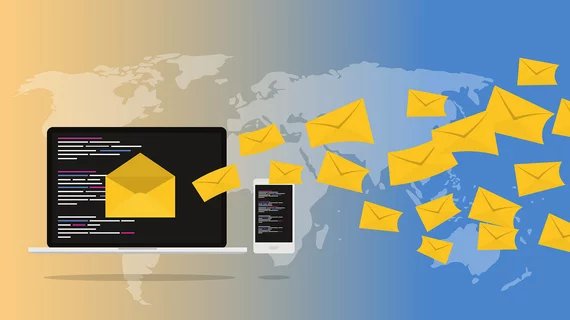Healthcare providers, radiologists included, spend hours each day reading over emails and clicking through various tasks. And inboxes continue to overflow as the COVID-19 pandemic erases the dividing line between work and home.
It’s important to have a strategy in place to avoid becoming overwhelmed. And recently, David Fessell, MD, professor of radiology at the Taubman Center in Ann Arbor, Michigan, and Frank J. Lexa, MD, MBA, chair of the Commission on Leadership and Practice Development of the ACR, compiled a few strategies on how to best prevent email from consuming your life.
Functionality is your friend
Darlene Metter, MD, professor of radiology and family and community medicine at UT Health San Antonio, offered up a few tips that will keep any rad ahead of the game. Foremost is using email application rules and filter functionalities to categorize, prioritize and automatically flag unwanted mail.
Metter also recommends trying out a smartwatch that can sync with an already filtered inbox to bring your attention to only the most urgent emails.
“Email is not going away anytime soon. And ignoring the inbox is not a strategy, it is only denial,” she wrote.
Develop your own response strategy
Everyone should be using separate accounts for work and personal email, according to Himanshu Shah, MD, chair of Indiana University School of Medicine’s Department of Radiology and Imaging Sciences. Unsubscribing from unnecessary lists and optimizing spam filters are also essential moves.
Even more important, he added, is setting boundaries and expectations for sending, reading and responding to mail. Don’t leave your email window open throughout the day and read messages in batches, instead of one by one.
The five D’s of answering email
Bruce Forster, MD, head of the University of British Columbia’s Department of Radiology suggests employing what he calls the five D’s:
- Do it: If an email is important and can be handled in 3 to 5 minutes, respond right away. If not, go on to his second D.
- Defer it: Essentially, leave the email for later.
- Delete: Get rid of emails you don’t need on the “first pass.”
- Delegate it: Hand off the communication to another team member.
- Deposit it: Have folders ready for emails you’ll need in the future.
Read the entire piece in the Journal of the American College of Radiology here.

